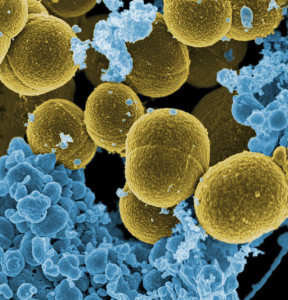 While many scientists draw conclusions from research that they think is incontrovertible, in fact there are many inherent problems with current research and its conclusions. A previous post described the many issues involved in attempts to understand the brain. Another described problems with inferring how brain regions are correlated with mental states using using brain imaging data. I refer those interested to The Limits of fMRI Research.
While many scientists draw conclusions from research that they think is incontrovertible, in fact there are many inherent problems with current research and its conclusions. A previous post described the many issues involved in attempts to understand the brain. Another described problems with inferring how brain regions are correlated with mental states using using brain imaging data. I refer those interested to The Limits of fMRI Research.
One inherent problem in neuroscience is that in many cases, research has to be done on animals rather than humans. This research is intrusive to the animal and therefore, cannot be done in humans. Extrapolation of data from animal research to conclusions about humans has many drawbacks. Some of these are described in a previous post on the limits of current neuroscience. In that post research was described showing animals are not the same in captivity when compared with being free in natural surroundings. While this doesn’t seem relevant to many, in fact, the differences are quite significant and could affect major research conclusions. Also, research shows that these differences exist not just in non-human primates, dolphins, dogs and elephants, but also in mice, flies and worms—favorite research models.
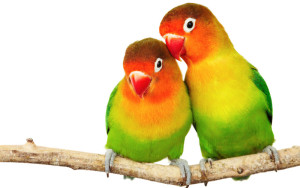 But, now an entirely new issue has emerged. It is clear to those who are reading posts on Searching for the Mind related to microbes, as well as following science in general, this is an age where the great influence of microbes in all aspects of nature has become apparent. In human beings, there are trillions of microbes, in fact ten times as many cells of microbes than human cells. If you count DNA in human beings, there is 300 times more from microbes than in the human genome. This has vast ramifications, which are just now being discovered. Microbes affect the development of the immune system, the environment of the gut, skin, lungs and even the brain. Microbe products have been correlated as important related to obesity, diabetes, anxiety, stress and possibly depression. The types of microbes that exist in people’s gut are very relevant to many possible diseases. A variety of posts have elaborated these findings.
But, now an entirely new issue has emerged. It is clear to those who are reading posts on Searching for the Mind related to microbes, as well as following science in general, this is an age where the great influence of microbes in all aspects of nature has become apparent. In human beings, there are trillions of microbes, in fact ten times as many cells of microbes than human cells. If you count DNA in human beings, there is 300 times more from microbes than in the human genome. This has vast ramifications, which are just now being discovered. Microbes affect the development of the immune system, the environment of the gut, skin, lungs and even the brain. Microbe products have been correlated as important related to obesity, diabetes, anxiety, stress and possibly depression. The types of microbes that exist in people’s gut are very relevant to many possible diseases. A variety of posts have elaborated these findings.
But, until now no one has considered what effect microbes would have on animals used in research. In fact, very recently, it has been noted that the vast array of different microbes in research animals, including bacteria and viruses, could have extremely important effects on the outcomes of experiments. Placing animals in different situations and environments alter their microbes and can alter the results of the studies. Since replication of scientific studies is essential to determine validity, these new findings are disturbing.
Are Microbes Altering Replication Studies?
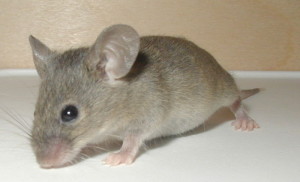
A recent study looked at a medication affecting bone density in a sample of mice. After getting a result, they then attempted to repeat the experiment to see if it was still true. The experiment was identical in every way, except using a new batch of mice. In fact, the mice came from the same place and they were the exact same mouse species. They used the same cages, material, food and did it in the same exact space.
The second result was completely different. When it was done for the third time, the first result occurred, not the second. How odd!
Then, the scientists looked at the microbes in the guts of the mice from the three experiments. They found different microbes in each of the groups of mice and different signals coming from the gut. It was not at all clear how this difference occurred—during transit of the mice, from the staff, or unknown factors.
Not being able to replicate experiments is not a new problem. But, it has been noted to be increasing as the number of experiments increases. Some have said that lack of replication is a very serious problem throughout all research, but possibly worst with testing of new medications and in neuroscience. Causes have been thought to be various kinds of bias, pressure for rapid publication in academia, and cheating. Now, National Institutes of Health is looking for simpler explanations, such as animal strains, different labs in different cities, and different protocols. But, now much of it could be due to different microbes. This includes viruses, bacteria, fungi, protozoa and archaea.
Hard to Find Out
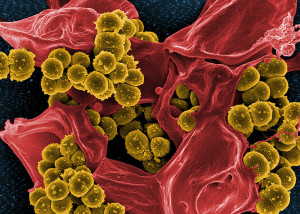 It turns out the microbe species in mice are very dynamic and variable. Previous posts have shown how in humans, microbe populations can become quite stable over many years. This occurs through a conversation among gut cells, immune cells, brain cells, blood cells and microbes themselves. In this conversation friendly and unfriendly microbes are determined.
It turns out the microbe species in mice are very dynamic and variable. Previous posts have shown how in humans, microbe populations can become quite stable over many years. This occurs through a conversation among gut cells, immune cells, brain cells, blood cells and microbes themselves. In this conversation friendly and unfriendly microbes are determined.
Some research kills all of the microbes to start the experiment. This adds entirely new variables, because some species are critical to normal functioning of the immune system. Very elaborate attempts are made to duplicate experiments—the amount and type of bedding, the cycles of day and night in the lab, temperature, and types of cages. But, even this is not enough because there are unknown variables.
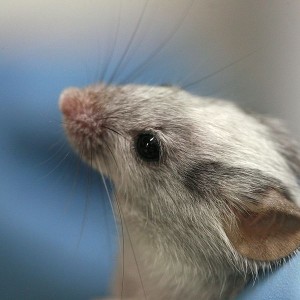 Food can change microbes in the mice—even the brand of grain or the amount of protein in the same brand. Mice eat each other’s feces and share microbes among all cage mates. Stress of separation can alter one mouse and impact all the others. Killing of mice and separation from mothers alters stress as well as their individual populations of microbes. In one study at a pharmaceutical company, a single room in the research building altered urine metabolites that affected the medication studies. In another study about multiple sclerosis, symptoms were altered by an antibiotic in one of the animals water bowels.
Food can change microbes in the mice—even the brand of grain or the amount of protein in the same brand. Mice eat each other’s feces and share microbes among all cage mates. Stress of separation can alter one mouse and impact all the others. Killing of mice and separation from mothers alters stress as well as their individual populations of microbes. In one study at a pharmaceutical company, a single room in the research building altered urine metabolites that affected the medication studies. In another study about multiple sclerosis, symptoms were altered by an antibiotic in one of the animals water bowels.
Microbes can affect the risk of getting asthma and HIV. They can alter obesity of offspring. They alter reactions to medications.
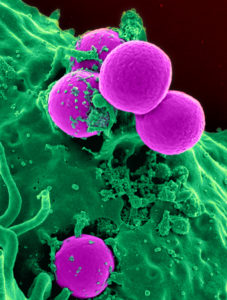 Researchers are attempting to define a “normal” mouse microbiome (set of microbes). Poop has mainly two microbe types—firmicutes that help with dietary fat absorption and Bacteroidetes that like high fiber diets. But, beyond this there are many differences. One type of bacteria helps stimulate vital immune cells and antibodies. This is a smaller group, but is critical (SFB – segmented filamentous bacteria). Without this particular small colony, all immune studies would be different. Currently it is the main microbe that researchers are looking for whenever they do inflammation research. Mice can be procured for research with or without SFB.
Researchers are attempting to define a “normal” mouse microbiome (set of microbes). Poop has mainly two microbe types—firmicutes that help with dietary fat absorption and Bacteroidetes that like high fiber diets. But, beyond this there are many differences. One type of bacteria helps stimulate vital immune cells and antibodies. This is a smaller group, but is critical (SFB – segmented filamentous bacteria). Without this particular small colony, all immune studies would be different. Currently it is the main microbe that researchers are looking for whenever they do inflammation research. Mice can be procured for research with or without SFB.
In each mouse cage there is one sentinel mouse sitting at the bottom. It is exposed to all of the droppings from all of the other mice. Sometimes, they gather all of the droppings from all the cages, combine them and then test the sentinel mouse. These sentinels pick up most of the microbes that create diseases and alterations in the mice. The response to an infection is to kill many of the microbes that will also alter the research.
Should Research Use Clean or Infected Animals
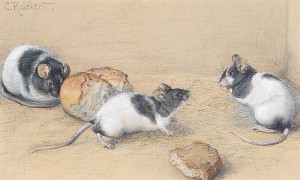 To be most useful in extrapolating to the realistic human situation, it is not clear if clean mice or infected mice should be used. There is now increasing evidence that children who are not exposed to ordinary dirt and microbes, do not develop strong immune systems.
To be most useful in extrapolating to the realistic human situation, it is not clear if clean mice or infected mice should be used. There is now increasing evidence that children who are not exposed to ordinary dirt and microbes, do not develop strong immune systems.
What is not clear is how much diversity is needed for a normal research result. Since we are only just beginning to understand the complex signaling effects of microbes in humans and other animals, it is not known how much diversity humans need either. Research findings may be affected by too much diversity and by too little.
 Recently, an experiment paired mice from pet stores with specially produced lab mice. The pet store mice had many disease microbes including pneumonia and hepatitis viruses. Many of the mice died in this process and survivors produced special T cells to fight off infections. Laboratories claimed that using pet store mice is perhaps an even more realistic comparison to humans in real life. Humans are exposed to a wide amount of different microbes in many different environments. These infected mice are now being used for research into immune responses to dangerous microbes such as chlamydia and salmonella.
Recently, an experiment paired mice from pet stores with specially produced lab mice. The pet store mice had many disease microbes including pneumonia and hepatitis viruses. Many of the mice died in this process and survivors produced special T cells to fight off infections. Laboratories claimed that using pet store mice is perhaps an even more realistic comparison to humans in real life. Humans are exposed to a wide amount of different microbes in many different environments. These infected mice are now being used for research into immune responses to dangerous microbes such as chlamydia and salmonella.
Mice from pet stores have very varied microbes, which might be better for research when comparing it to humans. It is the laboratory mice that might be most abnormal. But, this is big change from the long-standing cleanliness of laboratories trying to isolate particular situations. Labs have prided themselves in using healthy mice for research.
Separating Genes
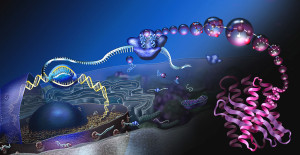 One way to study the effect of microbes on experimental animals is to genetically analyze all subjects. One research group uses only mice from the same litter and includes some mice that have a gene and some that don’t. This might eliminate the effects of microbes. One researcher predicts that research will have to include mappings of the genes of microbes in the animals that are used in research. But, the fact is that at present we only know about a small percent of the microbes that exist in the research animals, or humans for that matter. It is possible that until more is known, that adding many varied types of microbes into the mix might be the best way. Some are combining the microbiome from many different mice breeds.
One way to study the effect of microbes on experimental animals is to genetically analyze all subjects. One research group uses only mice from the same litter and includes some mice that have a gene and some that don’t. This might eliminate the effects of microbes. One researcher predicts that research will have to include mappings of the genes of microbes in the animals that are used in research. But, the fact is that at present we only know about a small percent of the microbes that exist in the research animals, or humans for that matter. It is possible that until more is known, that adding many varied types of microbes into the mix might be the best way. Some are combining the microbiome from many different mice breeds.
There is also knowledge to be gained about how microbes signal and operate in many different situations. The first researcher who found that microbes affect bone density, went on to discover that the mice microbes had affected the immune response.
Animals in Captivity Are Different
Along with these issues about research using animals with varied microbes, another problem stands out. This big set of problems in current neuroscience is, rarely, ever discussed.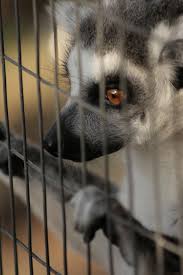
Research, usually, depends upon having a way to study a living brain. The only time that live human brains can be used is with very crude devices like fMRI, EEG, or, occasionally, with neurosurgical patients who have their brain opened for surgical procedures and agree to allow electrode probes of the effects of stimulation of different brain centers.
In all other cases, neuroscientists study animal brains and try to develop a model of a situation that the human brain faces. This research often mutates genes in cells of different animals (flies, worms, mice, etc.) that seems relevant to a human disease. This process then extrapolates from the animal to the human.
But, a major problem is the inherent difference in the research results when studying captive animals in a laboratory compared to animals in their natural surroundings. While it is clear that larger, highly intelligent animals such as apes, elephants, crows and dolphins, behave differently in captivity, it has only recently been found that this applies to many smaller animals as well. See post for details of mental illness of captive animals and the ethical questions this raises.
 Also, recent research shows that even very small animal brains demonstrate high intelligence, advanced social behavior, and many unusual capacities that human’s don’t have. An example is bees that exhibit symbolic speech, understanding of abstractions, and kaleidoscopic memory. These capacities occur in brain regions that are very different from human. So, simple comparison with activity in human brains is speculative. See post on animal intelligence.
Also, recent research shows that even very small animal brains demonstrate high intelligence, advanced social behavior, and many unusual capacities that human’s don’t have. An example is bees that exhibit symbolic speech, understanding of abstractions, and kaleidoscopic memory. These capacities occur in brain regions that are very different from human. So, simple comparison with activity in human brains is speculative. See post on animal intelligence.
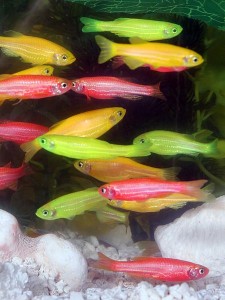 Surprisingly, recent research has shown that many of the favorite small animals used for neuroscience research—zebrafish, flies, worms, mice and rats—also have dramatic differences in results when the research is done in the laboratory versus natural settings. Housing conditions of zebrafish can have a major influence on scientific results.
Surprisingly, recent research has shown that many of the favorite small animals used for neuroscience research—zebrafish, flies, worms, mice and rats—also have dramatic differences in results when the research is done in the laboratory versus natural settings. Housing conditions of zebrafish can have a major influence on scientific results.
Recent research of mice in laboratories showed that providing a natural environment had an impact on the results of many unsuccessful trials of medication. Also, with flies, important differences are seen between their actions in laboratory settings and in the wild. In one study flies followed circadian clocks, but, in nature they followed the natural light. A conclusion was that not only are natural surroundings necessary for correct research results, but also for identifying what would be best for the animal.
Studying animals in natural settings is very difficult. Without being able to understand humans’ inner world, extrapolation to other species is very speculative.
Microbes In Animals Confound Research
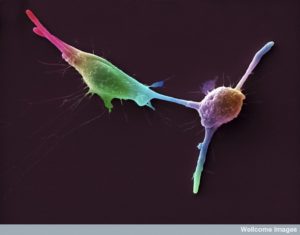 Along with the many limitations of research into the brain, using animals to understand human behavior is fraught with problems. Correlating mental states with imaging has severe limitations that are often ignored. Correlating animal models to human brain diseases and mental states are often problematical as well.
Along with the many limitations of research into the brain, using animals to understand human behavior is fraught with problems. Correlating mental states with imaging has severe limitations that are often ignored. Correlating animal models to human brain diseases and mental states are often problematical as well.
But, very few researchers are even aware of the inherent problems in using animals for all kinds of research. Increasingly, the fact that animals are different in captivity has been understood for a small select group of large intelligent animals. But, this has been ignored in small animals.
Until now, very few researchers have realized that varied microbes in the animals being used can determine the outcome. There is a lot to learn about microbes effects in both humans and in animal research models.